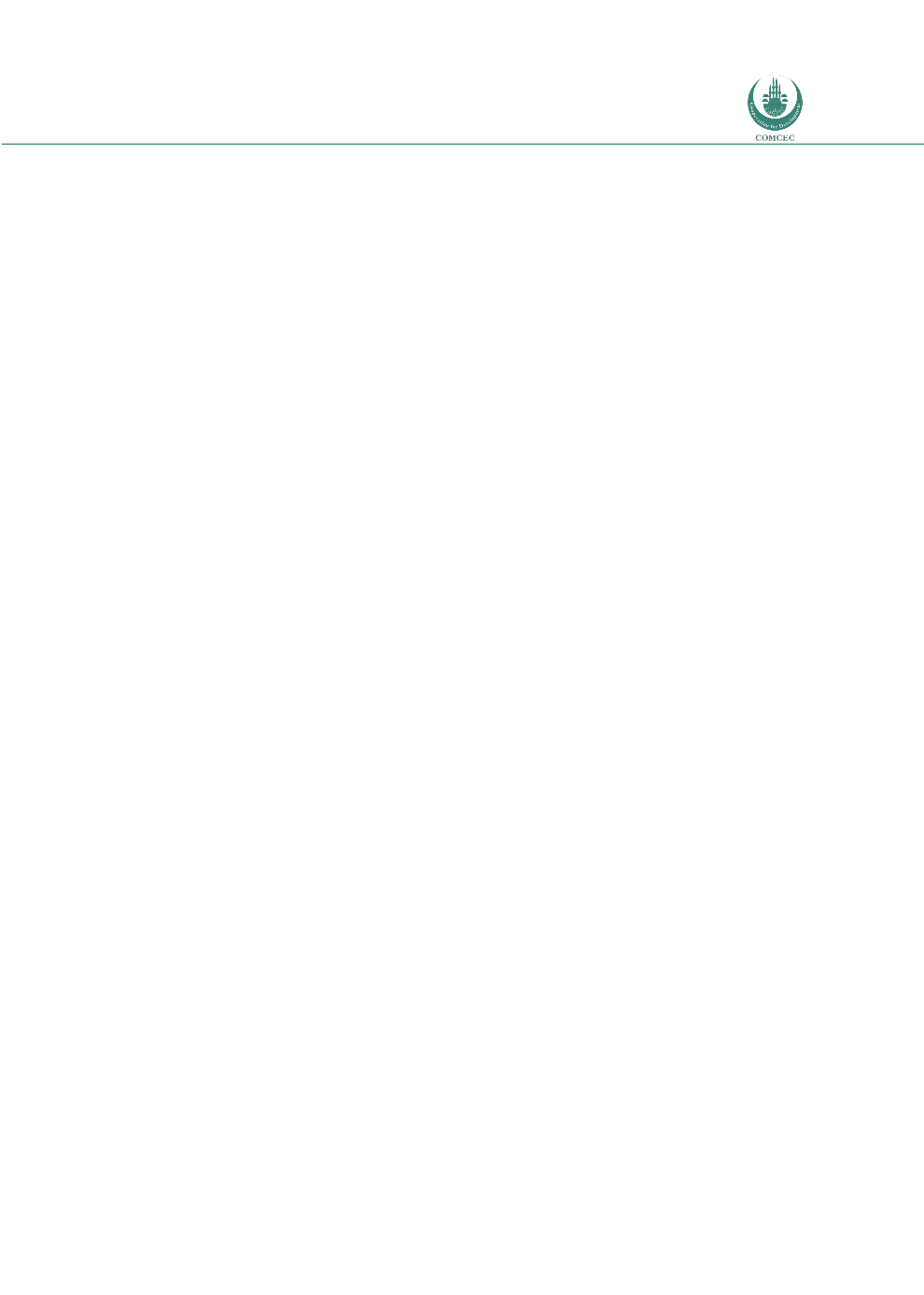

Risk Management in
Islamic Financial Instruments
131
(murabahah), where the MFI can buy a good and sell the object at higher price, and 2) ijarah,
where the MFI can lease objects for a fixed price and time.
Microtakaful is a second way of increasing financial inclusion. Conventional insurance services
are not Shariah compliant, due to the inherent high level of uncertainty. Takaful is a mutual
guarantee that functions by bringing together a group of people who contribute to a fund
managed by a takaful operator (TO). There are three takaful models: mudarabah, wikala, and
waqf. Mudarabah consists of a partnership relationship in which the participants contribute to
a fund and the TO invests the funds. The TO retains a certain amount of the profit, and the rest
is divided amongst the participants. In the wikala model, the TO’s compensation is not
dependent on the investment s/he makes. Instead, the TO acts as an agent and charges fixed
management fees for his service. The third model is waqf, where the participants add to a waqf
fund that the TO creates. The TO can choose to either be a partner or agent with the waqf
model (Ahmed 211-213). Furthermore, to target the poorest of the poor, mandatory zakat and
voluntary waqf funds can be used to create grants and interest-free loans for MFIs (Ahmed
211-212).
6.8. RECOMMENDATIONS AND RISK MANAGEMENT IMPLEMENTATION
6.8.1 Recommendations from the Risk Management Survey
We offer the following recommendations from the survey done in chapter 5.
(a) Training, research and development
IFIs must ensure proper training for their staff on various updated technologies that bankers
have to rely on for better analysis of the issues relevant to risk management in IFIs. IFIs should
increase investment in research and development activities to find challenges beforehand.
(b) Collaboration among IFIs and with external stakeholders
Active collaboration with international organizations may offer valuable insights into
challenges from various dimensions. In the absence of a strong secondary market, banks can
form a platform within themselves to solve liquidity problems. This kind of collaboration will
also help in preparing a strong country risk report.
(c) Investment in technology
In order get better estimations and communication updates, IFIs must invest in new
technologies to make sure that the staff is getting the right information at the right time. Since
the basic setup of the risk management system is already established, IFIs need to upgrade
their experience using cutting edge technology.
(d) Stop competing with conventional banks
Even though it is not entirely possible for many years to come, IFIs must stop competing with
the conventional banks. Conventional banking risks and those of IFIs are never the same. Many
IFIs are operating in dual banking systems and are primarily threatened by monetary systems

















